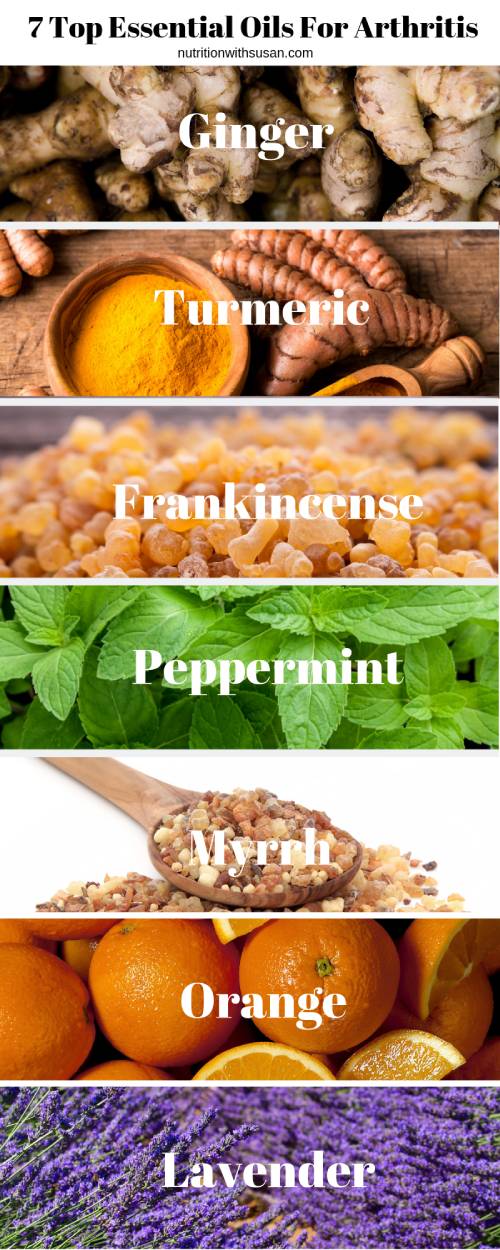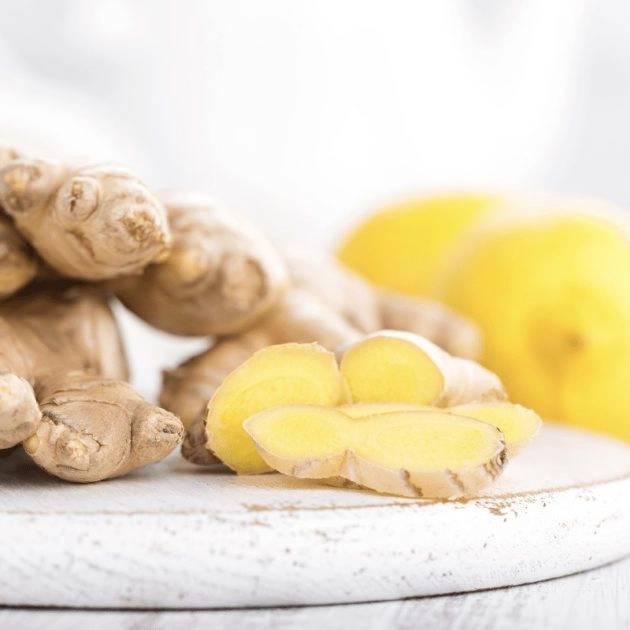Introduction
We all love the smell of essential oils –soothing lavender, invigorating orange, and healing turmeric to name a few.
Most people have heard of using essential oils for aromatherapy. If you’ve ever had a relaxing massage with essential oils, you know what I’m talkin ’bout!
Essential oils are derived from the leaves, stems, branches, flowers and fruits of plants. High in antioxidants, essential oils help to create the analgesic and anti-inflammatory effects needed to decrease the inflammation and pain of arthritis.
But what about extracts? Are extracts and essential oils one and the same? No — extracts are use mainly for cooking and don’t contact all the health benefits of essential oils. Examples of extracts are vanilla extract, almond extract, and teas.
Do oral dietary supplements contain essential oils? Good question — in the U.S., essential oils are often thought of as being separate from dietary supplements. U.S. law says that a dietary supplement is meant to be absorbed by the GI tract while essential oils are absorbed primarily through the nose, lungs and skin.
Essential oils have been used for centuries in Chinese and Indian medicine to treat a variety of medical problems, including arthritis.
There are over 100 different types of arthritis, but this article will deal with two of the most common — osteoarthritis and rheumatoid arthritis.
The Basics
The quality of the oil matters. Use only pure, organic oils without a lot of added ingredients. Keep it simple.
Oils do oxidize so don’t keep them in your medicine cabinet forever — 3 years is the max. If the oil looks or smells funny, throw it out!
More isn’t always better! An essential oil can cause a bad reaction is you use too much or use it too often.
Do tell you doctor that you use essential oils as they may interact with your medications. Be safe!
Essential Oils for Inflammation
Inflammation and arthritis
What does inflammation have to do with arthritis — well, everything! Acute inflammation is a good thing — when you cut yourself or break a bone, your body activates your immune system, sending white blood cells to the injured area to help heal you and protect your body from “outside invaders”.
However, good inflammation goes bad if it becomes chronic. When your body is constantly stressed out due to a project at work or your deadbeat boyfriend, it senses something’s not right and tries to help out by producing inflammation. Over time, this constant inflammation exhausts your immune system which may lead to chronic illness.
Arthritis is a product of inflammation. While osteoarthritis is more the result of “wear and tear” on joints such as from running, rheumatoid arthritis is an autoimmune disease in which the immune system attacks the body’s own tissues, causing painful swelling and inflammation in the joints, and even other parts of the body.
Essential oils for arthritis
Can essential oils help relieve joint pain and stiffness? Yes — studies have shown that essential oils may help in relieving arthritis symptoms, however, they may not stop disease progression and joint damage.
The top 7 anti-inflammatory oils for arthritis symptom relief are:
- Ginger
- Turmeric
- Frankincense
- Peppermint
- Orange
- Myrrh
- Lavender

Ginger

Ginger is a root from which the compounds gingerol and nongingerol are extracted. Lab tests have shown essential oils containing both these compounds are more effective in the treatment of rheumatoid arthritis.
Ginger has both anti-inflammatory and analgesic properties, making it a great pain reliever. These benefits may make it worth considering adding to your arthritis toolbox.
Studies have also shown ginger may have numerous other benefits such as warding off the common cold and soothing abdominal discomfort from nausea/vomiting. Add 1-2 drops to 8 ounces water to help with stomach upset; put a drop in the palm of your hand and inhale if feeling nauseous.
If you’re more of a DYI’er, try this soothing essential oil blend for joint pain — mix 1 ounce of a carrier oil such as jojoba or coconut oil, 9 drops of ginger oil, and 5 drops of orange oil. Massage into the affected area.
Ginger essential oil does not have any major side effects, however, as with many essential oils pregnant women or those breast feeding should use with caution.
Turmeric

One of the most researched yet most over-hyped essential oils is turmeric. Curcumin is the active component of turmeric responsible for it’s many benefits.
A recent Japanese study showed turmeric may help reduce inflammation associated with rheumatoid arthritis. By blocking the release of inflammatory cytokines, turmeric may help relieve inflammation of the tendons and joints.
Turmeric is relatively safe, but as with all essential oils, skin sensitivity may be an issue so it’s wise to do a patch test to make sure you don’t have an allergic reaction.
Frankincense

Frankincense, aka, Boswellia comes from the bark of the Boswellia tree found in India. Boswellic acid is its’ active component that may have anti-inflammatory and pain relieving capablilities.
Other purported benefits include relief of stress, anxiety, and pain, improved immune function, improved circulation, and anti-microbial/anti-fungal effects.
In a 2004 study of 30 people with osteoarthritis of the knee, those receiving a daily dose of a frankincense / Boswellia supplement reported less knee pain and increased mobility compared to placebo.
A 2010 study indicated frankincense may be useful in treating the inflammation of osteoarthritis.
Try this massage blend recipe for relief of arthritis joint pain.
Blend 12 drops of Frankincense essential oil, 8 drops orange essential oil, 6 drops Turmeric essential oil, and 2 tbsp sweet almond oil in a dark colored glass bottle. Massage 1 tbsp of the oil into the painful area.
Frankincense has long been used medicinally in Indian and Chinese medicine and has relatively few side effects.
Myrrh

Myrrh — sounds very mysterious and exotic doesn’t it? Actually, it’s a little more down to earth as it’s a gum derived from tree resin.
Myrrh has long been known to have analgesic properties, and is most often used in combination with other anti-inflammatory oils, such as frankincense, to help calm joint pain and inflammation.
A 2015 study with rats found that a combination of frankincense and myrrh was effective in suppressing inflammation associated with rheumatoid arthritis.
Large doses of Myrrh may be potentially harmful, but small doses are usually tolerated well. However, potential side effects include skin rash, low blood sugar and it should be avoided during pregnancy.
Peppermint

Peppermint oil is obtained from the crush leaves of the peppermint herb. It naturally contains limonene and menthol, known for their healing properties.
Peppermint oil may help relieve arthritis pain. Menthol may be responsible for this benefit as it interferes with the body’s pain pathways, and is often used in combination with other essential oils when applied topically.
Try this recipe for a soothing salve to help alleviate joint pain. Mix 5-10 drops of peppermint oil with 2 tbsp coconut oil, then massage into to the affected joint.
Depression is a common problem for RA patients. Peppermint Oil may help improve your mood, reduce stress, and reduce depression.
Diffusing essential oils is an easy and safe way to reap their benefits. Try this recipe for it’s mood boosting benefits: 2 drops peppermint oil, 2 drops sweet orange oil, 2 drops lime oil.
Side effects? Well, there are a few possibles — heartburn, skin rash/irritation can happen. There’s always a chance of an allergic reaction so it’s a good idea to test on a small area.
Orange

Orange essential oil has been found to have anti-inflammatory, immune boosting, and antioxidant properties. D-Limonene is the active compound found in citrus peel responsible for many of its benefits.
A 2017 study on aromatherapy found that inhaling orange essential oil aided in pain relief compared to placebo.
A 2008 study on elderly patients with moderate to severe knee pain, suggests that massage with a combination of orange oil and ginger oil helped relieve knee pain if used regularly.
Photo sensitivity is a possible side effect of citrus oils, so it’s a good idea to avoid direct sun exposure for about 12 hours after applying orange oil to your skin.
Lavender

Lavender essential oil is derived from certain lavender plant species by steam distillation.
The phytochemicals linayl acetate, linalool, lavandulol, 1.8-cineole, lavandulyl, and camphor contribute to its’ many benefits.
Lavender essential oil is incredibly well known for it’s ability to soothe a tired mind and relax tight muscles, but that’s not all it can do.
Studies on lavender oil massage have found it beneficial in relief of pain and stiffness associated with osteoarthritis, resulting in improvement in the subjects ability to perform daily activities.
Lavender + sweet almond oil massaged into swollen, arthritic knee joints was found to help relieve pain in a 2016 study on osteoarthritis.
Lavender may also decrease insomnia, depression, and anxiety associated with arthritis.
Try adding a few drops of lavender oil to your diffuser or bath to help you sleep. You could also soak a towel in a mixture of lavender oil and warm water to use as a compress on achy joints.
Side effects include possible skin rash or irritation – make sure to dilute the oil before use.
If allergic you may experience nausea, vomiting, dizziness, or headache after inhaling from a diffuser.
Beware of using with sedatives or when driving as lavender may make you drowsy. As always, check with your doctor before using if you are pregnant.
Conclusion
While more research is needed, essential oils appear to be useful for arthritis symptom relief.
Though it hasn’t yet been proven essential oils can stop disease progression, they can serve as a complementary treatment to other forms of therapy and improve your quality of life.


